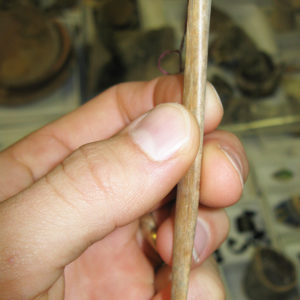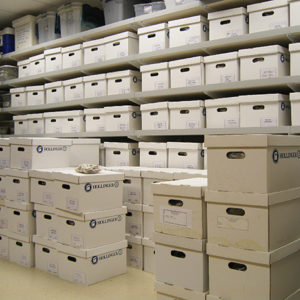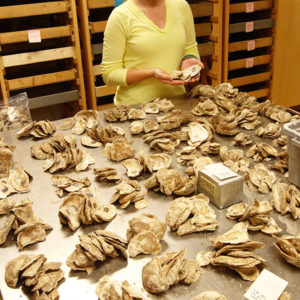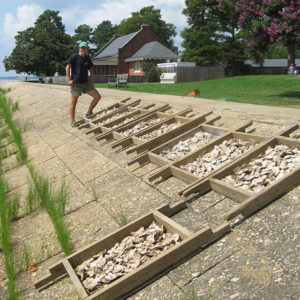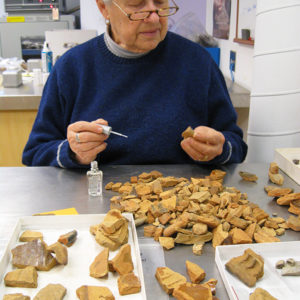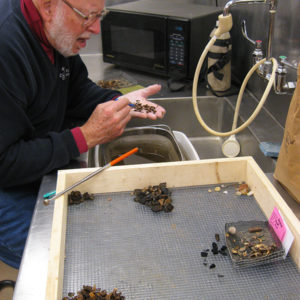With the archaeologists out of the field, work now shifts inside to report writing, working on the digital archive, and research, among many other things. In the lab, discoveries continue to be made. While washing artifacts from the well, volunteers have discovered tools fashioned out of bones. Two small bone needles have been found in the past few weeks. One of the needles has an engraved design on both sides. These were likely made by Virginia Indians for use in net or basket making.
Further discoveries were made as the conservators cleaned the wooden staves of the well barrel prior to conservation. Several markings have been seen on some of the staves, which could signify the contents of the barrel, or possibly the maker’s mark of the cooper who made the barrel. The wood is oak, and it is hoped that scientific analysis of the wooden staves and hoops can determine if the barrel was made in Europe or in North America.
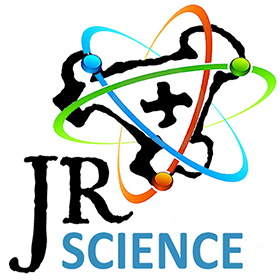 This month we visited mollusk biologist Dr. Juliana Harding at the Virginia Institute of Marine Science (VIMS). She is working with thousands of oyster shells found at the James Fort site, the bulk of which were found in the well during the 2009 excavations. Dr. Harding and her colleagues have already published an article in the Journal of Shellfish Research on their work comparing modern oyster shells to oyster shells found in the well we excavated at James Fort in 2006. The title of their article is “Shell Length-At-Age Relationships in James River, Virginia, Oysters (Crassostrea Virginica) Collected Four Centuries Apart.”
This month we visited mollusk biologist Dr. Juliana Harding at the Virginia Institute of Marine Science (VIMS). She is working with thousands of oyster shells found at the James Fort site, the bulk of which were found in the well during the 2009 excavations. Dr. Harding and her colleagues have already published an article in the Journal of Shellfish Research on their work comparing modern oyster shells to oyster shells found in the well we excavated at James Fort in 2006. The title of their article is “Shell Length-At-Age Relationships in James River, Virginia, Oysters (Crassostrea Virginica) Collected Four Centuries Apart.”
Through their work with the James Fort oysters, Dr. Harding and her colleagues are adding volumes of new information about historic oyster populations and the Chesapeake Bay of 400 years ago.
related images
- Bone tool made by a Virginia Indian found in the well
- Boxes of James Fort oyster shells undergoing study at VIMS
- Counting oyster shells in the lab
- Drying oyster shells along the seawall this past fall in preparation to send them to VIMS for study
- Barrel staves with marks present
- Mark on a barrel stave
- Volunteer Crista Mueller preparing ceramics from the well to be numbered
- Volunteer Fritz Mueller washing artifacts from the well



